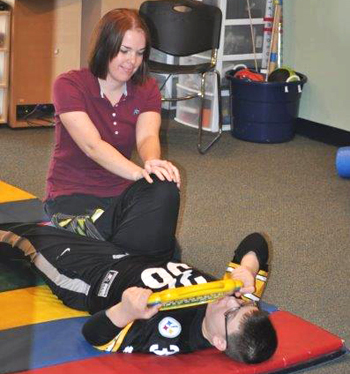
|
Pediatric Occupational, Physical, ABA/Behavioral, Feeding, Speech, and Language Therapies Main Clinic: 931-372-2567 1445 East 10th Street Cookeville, TN 38501 Email: [email protected] HIPAA Secure Email: [email protected] Fax: (931) 372-2572 ABA Clinic: 931-201-9534 400 Dubois Road Cookeville, TN 38501 Email: [email protected] Please call today to get started! Most insurances accepted! |

|
| Who needs therapy? | SE HABLA ESPAÑOL |
Vision: A Learning Connection

Vision: A Learning Connection
What happens when there are undetected visual processing issues?
A child frequently may be avoiding reading, dislike fine motor activities, rub their eyes, tilt their head a lot, and have great difficulty with depth perception and eye hand coordination.
They may fuss, whine, and avoid near work.
They may get labeled "ADHD" or appear to have Dyslexia.
When you have a vision screening or your pediatrian gives you the "all clear" this means that the actual visual acuity is okay, but a comprehensive vision exam looks at 30 other visual processing issues including the muscles of the eyes, vestibular-visual interactions and proprioceptive/joint functions. A developmental optometrist with COVD credentials has taken a board exam and extensive CE after becoming an eye doctor to learn more about the evaluation and treatment of pediatric vision and learning issues.
Only Developmental Pediatric Optometrists look at the perceptual and eye muscle movements part of vision and learning.
When the body doesn't register movement appropriately, it is difficult for the brain to send the "endure" message to muscles. This impacts eye muscles, too.
Children with low muscle tone especially always have low tone in their eyes causing great difficulty with enduring near work or copying from the board work. This is often diagnosed as Convergence Insufficiency.
If your child has a hard time holding a pencil correctly or tying their shoes- they often will have difficulty with near focus and reading. The body works as a whole system. Developmental Optometrists are trained on how to help these issues.
Think of all the challenges and ways we use vision in the classroom:
Looking at words on a page and moving all the way across without losing the place, this is crossing midline with the eyes.
If the child can't cross midline with their arms and hands, they can't with their eyes.
You have to have this skill in order to understand the left to right movements for worksheets and reading!
Other challenges are: looking for an assignment on the board amidst so many visual attention grabbers in the classroom, refocusing on the paper to write information, then up, then down, then up etc. Using two eyes together to move through the room without bumping or touching objects. This list is endless!
The modifications listed here can ease the amount of fatigue an individual is experiencing
For questions or suggestions regarding visual solution, please Dr. Clopton at the Center of VISION 931-372-2020, www.covd.biz, or email him: [email protected]
Site empowered by
WebOnTheFly